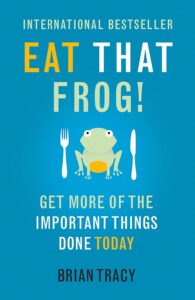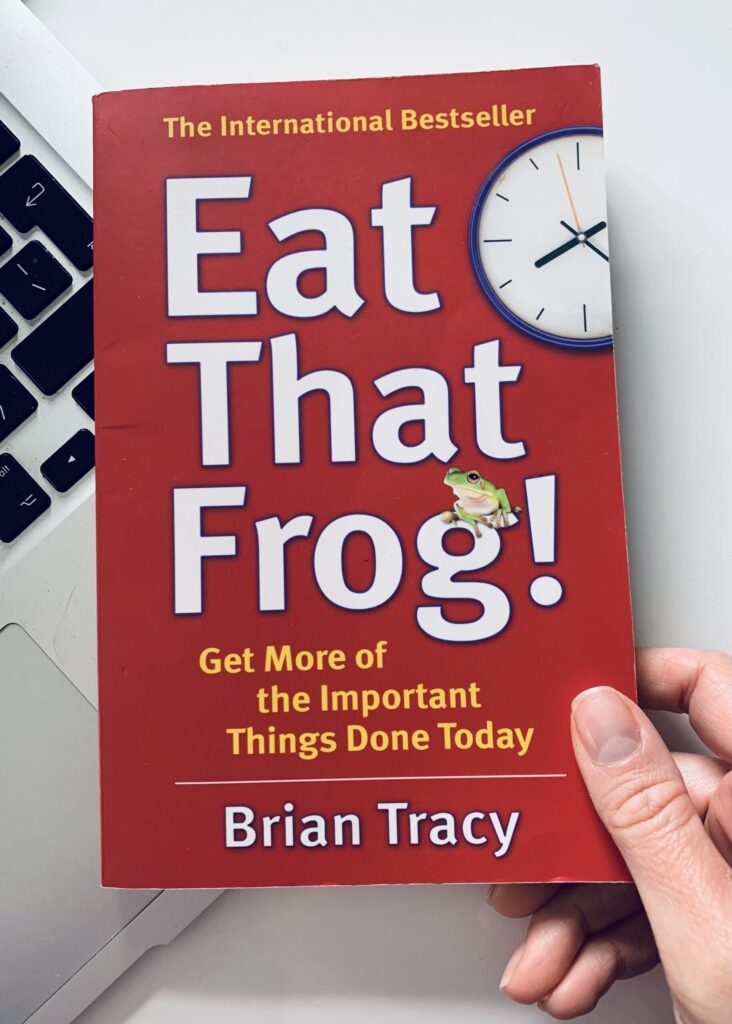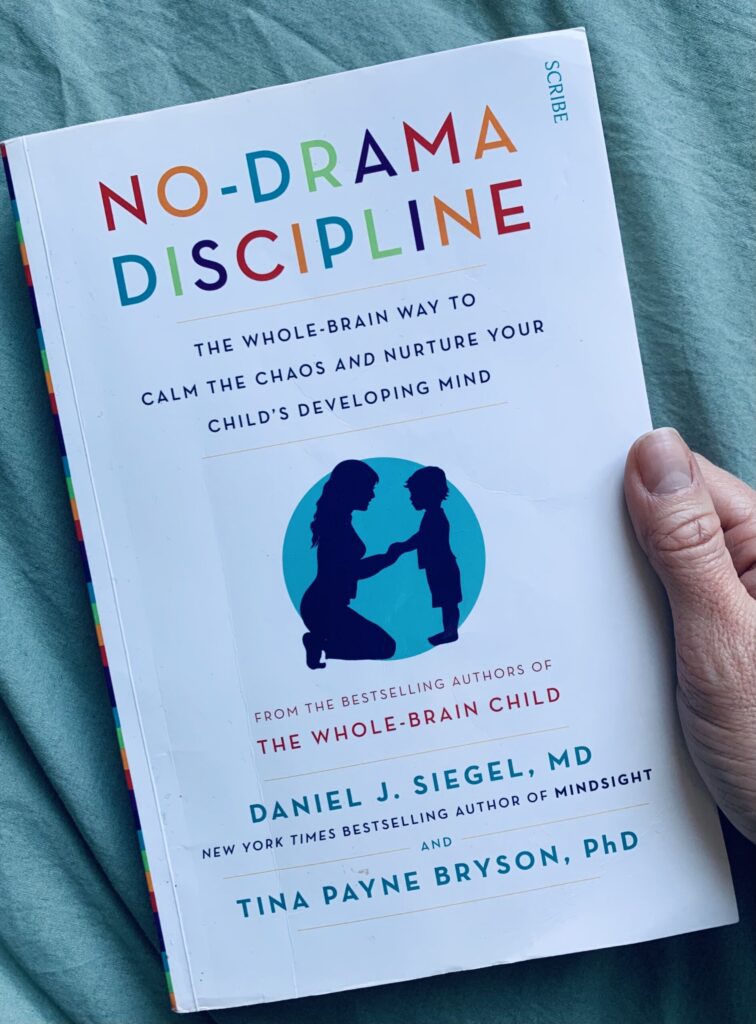 Eat That Frog! Book Summary
Eat That Frog! Book Summary
Get More Of The Important Things Done Today
Brian Tracy
Hodder & Stoughton; 1st edition (2013)
About Brian Tracy
Brian Tracy is the Chairman and CEO of Brian Tracy International, a company dedicated to the training and development of individuals and organizations. With a mission to help people achieve their personal and business goals more quickly and easily, Brian has consulted for over 1,000 companies and inspired millions through his 5,000+ talks and seminars across the globe. A prolific author, Brian has written over 45 books and produced more than 300 learning programs, including the globally acclaimed “Psychology of Achievement.” His expertise spans economics, history, business, philosophy, and psychology, making him a sought-after speaker on topics such as Leadership, Selling, Self-Esteem, and Success Psychology. Before establishing his company, Brian excelled in various industries, including sales, marketing, real estate, and management consulting. Fluent in four languages, he has worked in over 80 countries and remains actively engaged in community and national affairs.
About The Book
“Throughout my career, I have found a simple truth. The ability to concentrate single-mindedly on your most important task, to do it well and to finish it completely, is the key to great success, achievement, respect, status, and happiness in life. This key insight is the heart and soul of this book […]
The key to success is action. These principles work to bring about fast, predictable improvements in performance and results. The faster you learn and apply them, the faster you will move ahead in your career—guaranteed.
There will be no limit to what you can accomplish when you learn how to ‘Eat That Frog!'”
Brian Tracy is probably one of the most influential self-help gurus, alongside Tony Robbins, Stephen Covey, and Dale Carnegie. His little book, Eat That Frog!, is a gem for anyone who wants to “get more of the important things done today.”
Renowned for its impactful and straightforward approach, Eat That Frog! offers timeless advice for anyone looking to conquer procrastination and maximize efficiency. Tracy’s wisdom has guided countless individuals toward achieving their goals, making it an essential read for productivity enthusiasts.
The central theme of the book revolves around tackling your most daunting tasks first—the ones that will have the most significant impact on your productivity. By addressing these high-priority tasks at the start of your day, you set a tone of accomplishment and momentum that carries you through other tasks with greater ease. Tracy provides 21 practical steps to help readers identify their “frogs” and develop habits that turn them into productivity powerhouses.
It’s a quick read, very practical, and thought-provoking. I personally enjoyed the book a lot and strongly recommend it to anyone who wants to be more productive in life. Whether you are a student, an entrepreneur, or a busy parent juggling work and family, Eat That Frog! will help you build great habits and level up your life.
As you can imagine, the book is bursting with fantastic insights. In these notes, we’ll cover just a few of my favourites.
Let’s jump straight in.
Key Insights:
The Frogs and Why To Eat Them
“Mark Twain once said that if the first thing you do each morning is to eat a live frog, you can go through the day with the satisfaction of knowing that that is probably the worst thing that is going to happen to you all day long.
Your “frog” is your biggest, most important task, the one you are most likely to procrastinate on if you don’t do something about it. It is also the one task that can have the greatest positive impact on your life and results at the moment.”
This concept is brilliant, and it’s all about building the habit of tackling the most difficult task first thing in the morning. To be productive, we must resist the temptation to do easy tasks first.
Now, most of us procrastinate. Why? Because we’re inherently lazy—our brains are wired to avoid hard things. That’s what the Nobel-winning psychologist Daniel Kahneman described as “the law of the least effort.”
That’s why important tasks often migrate from one to-do list to another until we’re forced to act under pressure. The key to being productive in life and work is to discipline yourself to do the hardest tasks before moving on to something else.
So here is the Eat That Frog concept in its essence:
“The key to reaching high levels of performance and productivity is to develop the lifelong habit of tackling your major task first thing each morning. You must develop the routine of “eating your frog” before you do anything else and without taking too much time to think about it.”
Question for you: What is your number one task for today? How are you getting on?
That leads us to the next insight.
Habits For Success
“Your success in life and work will be determined by the kinds of habits that you develop over time. The habit of setting priorities, overcoming procrastination, and getting on with your most important task is a mental and physical skill. As such, this habit is learnable through practice and repetition, over and over again, until it locks into your subconscious mind and becomes a permanent part of your behavior. Once it becomes a habit, it becomes both automatic and easy to do.”
Habits are the building blocks of success. They’re like the scaffolding that supports your goals. If you want to boost your productivity, you need to pay close attention to your habits.
First step? Develop three key qualities: decision, discipline, and determination:
“First, make a decision to develop the habit of task completion. Second, discipline yourself to practice the principles you are about to learn over and over until they become automatic. And third, back everything you do with determination until the habit is locked in and becomes a permanent part of your personality.”
Now, let’s have a quick look at the 21 Productivity Habits.
P.S.: If you want to learn how to build great habits, I strongly recommend checking out our notes on Atomic Habits by James Clear and The Compound Effect by Darren Hardy.
21 Productivity Habits
In the book, Tracy dedicates each chapter to one of the 21 Productivity Habits. Here they are in a nutshell:
1. Set the Table.
Know what you want. Write out your goals before you even start.
2. Plan Each Day in Advance.
Don’t go with a flow – plan it out. Every minute you spend planning saves you ten in execution.
3. Apply the 80/20 Rule to Everything.
20 per cent of your tasks get you 80 per cent of your results. Focus on that crucial 20 per cent.
4. Consider the Consequences.
Your most important tasks and priorities are those that have the most serious consequences on your life and work. Focus on these above anything else.
5. Practice Creative Procrastination.
Procrastinate on the low-value tasks, so you can tackle the ones that matter..
6. Use the ABCDE Method Continually.
Before you start, rank your tasks by value and priority to stay focused on what’s important.
7. Focus On Key Result Areas.
Know what results you need to nail your job and work on them all day.
8. Apply The Law Of Three.
Identify the three things you do in your work that account for 90 per cent of your contribution, and focus on getting them done before any other task.
9. Prepare Thoroughly Before You Begin.
Have everything ready to go before you start. Gather all your info, papers, and materials so you can hit the ground running.
10. Take It One Step at a Time.
Break big tasks into smaller, manageable steps and focus on progress.
11. Upgrade Your Key Skills.
The better you get at your main tasks, the quicker you’ll get them done.
12. Leverage Your Special Talents.
Know your strengths and focus on excelling at them.
13. Identify Your Key Constraints.
Find the bottlenecks slowing you down and work on fixing them.
14. Put The Pressure On Yourself.
Create urgency. Pretend you’re about to leave town for a long holiday and must finish your most important tasks before you go.
15. Maximize Your Personal Powers.
Know your peak times for mental and physical energy and tackle your most important tasks then.
16. Motivate Yourself Into Action.
Be your own cheerleader. Develop optimism and focus on the solution rather than the problem.
17. Stop Technological Time Sinks.
Make technology work for you, not the other way around. Turn off your devices occasionally.
18. Slice And Dice The Task.
Break complex tasks into bite-sized pieces, then start with one small part.
19. Create Large Chunks Of Time.
Organize your days into time blocks for deep work on important tasks.
20. Develop A Sense Of Urgency.
Get into the habit of moving fast on your top tasks.
21. Single-Handle Every Task.
“Set clear priorities, start immediately on your most important task, and then work without stopping until the job is 100 percent complete. This is the real key to high performance and maximum personal productivity.”
If you’re nodding along – awesome. Now comes the hard part – actually implementing these habits.
Here’s a challenge for you: pick three habits that you think will make the most positive impact on your life and try them out. You can use James Clear’s habit formation framework from his great book Atomic Habits.
Let’s dive into a few of my favourites.
Set The Table
“Before you can determine your “frog” and get on with the job of eating it, you have to decide exactly what you want to achieve in each area of your life. Clarity is perhaps the most important concept in personal productivity. The number one reason why some people get more work done faster is because they are absolutely clear about their goals and objectives, and they don’t deviate from them. The greater clarity you have regarding what you want and the steps you will have to take to achieve it, the easier it will be for you to overcome procrastination, eat your frog, and complete the task before you.”
Get this – people who write down their goals achieve way more than those who just… don’t. Like, way more. We’re talking five to ten times more. Now, that sounds crazy, right?
Here’s the thing: writing down your goals isn’t some mystical ritual that grants wishes. It’s more like a punch in the face to your procrastination monster. By putting your goals on paper (or your phone, whatever floats your boat), you’re forcing yourself to get clear on what you actually want. No more fuzzy daydreams, it’s time to get specific.
And let’s be honest, seeing your goals written down in black and white can be a real motivator. It’s like a constant reminder of what you’re working towards. It’s the difference between saying, “I want to get in shape,” and staring down a training plan that says, “Day 1: 20 pushups, go!”
But guess what? Writing your goals down isn’t a guarantee of success. You have to take action, too. Tracy breaks it down into seven steps:
- Step 1: Decide exactly what you want.
- Step 2: Write it down.
- Step 3: Set a deadline for your goal; set subheadlines if necessary.
- Step 4: Make a list of everything that you can think of that you are going to have to do to achieve your goal.
- Step 5: Organize the list into a plan.
- Step 6: Take action on your plan immediately.
- Step 7: Resolve to do something every single day that moves you toward your major goal.
Now it’s your turn – what do you want to achieve? Write it down and start making moves toward your most important goal.
Apply The 80/20 Rule To Everything
“The most valuable tasks you can do each day are often the hardest and most complex. But the payoff and rewards for completing these tasks efficiently can be tremendous. For this reason, you must adamantly refuse to work on tasks in the bottom 80 percent while you still have tasks in the top 20 percent left to be done.
Before you begin work, always ask yourself, “Is this task in the top 20 percent of my activities or in the bottom 80 percent?”
The 80/20 rule, also known as the Pareto Principle, is basically the productivity world’s number one hack. It’s everywhere, from business to burpees (apparently, 80% of your fitness results come from 20% of the exercises you hate). And to be honest, it’s changed the way I approach, well, everything.
Here’s the deal: most things in life follow this lopsided pattern. Think about it – 20% of your clothes probably get worn 80% of the time. The same goes for your tasks. A small handful of high-value activities will deliver the lion’s share of the results you crave.
Tracy breaks it down even further in the book, suggesting applying the 80/20 rule to your constraints as well:
“… 80 percent of the constraints, the factors that are holding you back from achieving your goals, are internal. They are within yourself-within your own personal qualities, abilities, habits, disciplines, or competencies. Or they are contained within your own company or organization.
Only 20 percent of the limiting factors are external to you or to your organization. Only 20 percent are on the outside in the form of competition, markets, governments, or other organizations.”
How fascinating is that?
Now, here is a challenge for you. Take a look at your to-do list. Can you identify the 20% that will deliver the biggest results? What are the 80% that can be delegated, ignored, or thrown out the window entirely?
Treat Technology As a Servant, Not As a Master
“For you to be able to concentrate on those few things that make the most difference in your business or personal life, you must discipline yourself to treat technology as a servant, not as a master. Technology is there to help you, not to hinder you. The purpose of technology is to make your life smoother and easier, not to create complexity, confusion, and stress.
One of the best rules for dealing with technology is to just “leave it off.” Resist the urge to start turning on communication devices as soon as you wake up in the morning. Leave the radio off. Leave the television off.
Leave your cell phone off. Leave your computer off until you have planned and organized your day. Deliberately create zones of silence in your life where no one and nothing can break through and reach you. Maintain your inner calm by forcing yourself to stop on a regular basis and “listen to the silence.”
Sometimes, to get more done of higher value, you have to stop doing things of lower value. Keep asking yourself, “What’s important here?” What is important for you to accomplish at work? What is important in your personal life? If you could only do one or two of the activities available to you, which ones would they be?”
Let’s be real – We’re all slaves to the digital dopamine drip. Social media, Netflix, that endless email chain – they all conspire to steal our focus and shred our productivity (and creativity).
If you doubt the addictive design of modern tech, check out Adam Alter’s eye-opening book Irresistible, where he explains how big companies invest billions into hacking our brains and our attention. Manoush Zomorodi also discusses how technology affects our creativity in her brilliant book Bored and Brilliant, where she argues that tech disrupts our ability to daydream and tap into our creative minds.
So, before you start mindlessly scrolling on Instagram or pressing “On” on the remote, ask yourself: “What’s important for me here?” Let your goals drive your dopamine, not the technology.
P.S.: One of the best books I’ve read on using technology to boost productivity is Building a Second Brain by Tiago Forte. His framework has been a game-changer for me, and I can’t recommend it enough to anyone looking to be more productive and organized.
Use Time Blocks And Your Calendar
“A time planner, broken down by day, hour, and minute and organized in advance, can be one of the most powerful personal productivity tools of all. It enables you to see where you can consolidate and create blocks of time for concentrated work.
During these working times, turn off the telephone, eliminate all distractions, and work nonstop. One of the best work habits of all is to get up early and work at home in the morning for several hours. You can get three times as much work done at home without interruptions as you ever could in a busy office where you are surrounded by people and bombarded by phone calls.”
Totally agree! A time planner with hourly breakdowns has been a number one tool for me that boosted my productivity dramatically (I use simple tool – Google Calendar). Blocking out time for deep work lets me crank through tasks without distractions. So much more productive than feeling scattered throughout the day!
Action Steps For You:
- Get clear on your goals: Start by taking a clean sheet of paper or a notebook and list ten goals you want to accomplish in the next year. Once you’ve got your list, review it and identify the one goal that, if achieved, would have the greatest positive impact on your life. Transfer this goal onto a separate piece of paper, set a clear deadline, and create a detailed plan to achieve it. Every day, take at least one action that moves you closer to this goal. This approach keeps you focused and motivated, ensuring that you’re always making progress towards what truly matters.
- Finish the most important tasks first thing in the morning: Start your day by identifying the task that will have the most significant impact on your goals and tackle it immediately – Eat That Frog!
- Plan each day in advance and time-block deep work: Before you start your day (or even the evening before), map out your tasks and prioritize them. Identify the most critical tasks that require intense focus and schedule uninterrupted blocks of time to tackle them. During these periods, eliminate all distractions—turn off notifications, close unnecessary tabs, and create a workspace that fosters concentration.
Quotes From the Book:
“Your mental picture of yourself has a powerful effect on your behavior. Visualize yourself as the person you intend to be in the future. Your self-image, the way you see yourself on the inside, largely determines your performance on the outside. All improvements in your outer life begin with improvements on the inside, in your mental pictures.”
“You can get your time and your life under control only to the degree to which you discontinue lower-value activities.”
“The key to reaching high levels of performance and productivity is to develop the lifelong habit of tackling your major task first thing each morning. You must develop the routine of “eating your frog” before you do anything else and without taking too much time to think about it.”
“To keep yourself motivated, you must resolve to become a complete optimist. You must decide to respond positively to the words, actions, and reactions of the people and situations around you. You must refuse to let the unavoidable difficulties and setbacks of daily life affect your mood or emotions.”
“The more you discipline yourself to use your time well, the happier you will feel and the better will be the quality of your life in every area.”
“Successful, effective people are those who launch directly into their major tasks and then discipline themselves to work steadily and single-mindedly until those tasks are complete.”



